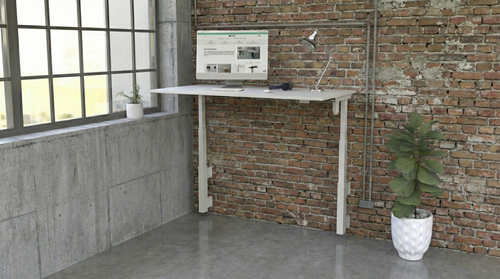In today's world, where the environment demands our attention more than ever, it is crucial to consider how we can create work environments that prioritise health and environmental friendliness. Sustainable ergonomics is a practice that aims to achieve just that by developing workspaces that are healthy for employees and sustainable for the planet. By making conscious choices and implementing simple strategies, we can significantly reduce our environmental impact and contribute to a more sustainable future.
Here are some of the key benefits of incorporating sustainable ergonomics into the workplace:
- Increased productivity: Employees tend to be more productive when they are comfortable and in good health.
- Improved employee morale: Creating a healthy and sustainable work environment is likely to result in happier and more engaged employees.
- Reduced stress levels: A work environment that promotes health and sustainability can help reduce stress levels and improve overall mental well-being.
- Improved air quality: Sustainable practices can lead to better air quality in the workplace, benefiting both employees and the environment.
- Reduced carbon emissions: Implementing sustainable practices can help decrease carbon emissions, contributing to environmental protection.
If you are looking to create a healthy and sustainable work environment, here are several actionable steps you can take:
- Use energy-efficient lighting: Replace traditional incandescent bulbs with LED lights, which consume up to 75% less energy and last up to 25 times longer.
- Take advantage of natural light: Position workstations near windows to maximise natural light and reduce the need for artificial lighting during daylight hours. Natural light provides numerous health benefits, such as stress reduction and improved sleep quality.
- Choose sustainable materials: When selecting office furniture, opt for pieces made from sustainable and recyclable materials. Look for certifications like Forest Stewardship Council (FSC) or Greenguard, which ensure responsible sourcing and low chemical emissions. Bamboo, reclaimed wood, and recycled materials are great choices to minimise your carbon footprint.
- Reduce paper usage: Embrace the digital era by minimising paper usage. Store documents electronically, share files digitally, and utilise cloud-based collaboration tools to reduce printing needs. When printing is necessary, print double-sided to save paper. Implement a paper recycling program and educate employees about proper waste disposal to ensure effective recycling.
- Encourage sustainable commuting: Provide incentives for carpooling, cycling, or using public transportation. If feasible, offer bike racks and shower facilities to promote active commuting. Promoting a greener commute means not just reducing carbon emissions, but also promoting employee health and well-being.
- Manage waste effectively: Place recycling bins for paper, plastic, and other recyclable materials throughout the office. Clearly label containers and educate employees about proper waste disposal. Encourage the use of reusable water bottles, coffee cups, and utensils to reduce single-use plastic waste. To further reduce landfill contributions, consider composting food waste at the office cafeteria or kitchen.
- Invest in energy-saving equipment: Opt for energy-efficient office equipment such as computers, printers, and appliances. Look for ENERGY STAR-certified products that consume less energy without sacrificing performance. Encourage employees to switch off lights, computers, and other equipment when not in use and utilise power-saving features like sleep mode. Energy consumption can also be reduced by smart power strips that automatically shut down power to peripheral devices when the main device is turned off.
- Bring nature indoors: Incorporate indoor plants into your workspace to improve air quality and reduce stress levels. Choose low-maintenance plants such as spider plants, pothos, or peace lilies that thrive in office environments with minimal care. Studies have shown that plants can enhance air quality by removing harmful pollutants from the air and reducing stress levels whilst increasing productivity.
- Manage power usage: Encourage employees to switch off lights, computers, and other equipment when not in use. Utilise power-saving features like sleep mode on computers and screens. Consider using smart power strips that automatically cut off power to peripheral devices when the primary device is off. These measures help minimise energy consumption and lower electricity bills.
- Embrace remote work and flexible schedules: Where possible, embrace remote work and flexible schedules. This reduces commuting-related carbon emissions and allows employees to work in eco-friendly home environments. Encourage video conferencing and virtual collaboration tools to minimise the need for travel. Flexible schedules also promote work-life balance, increasing employee satisfaction and productivity.
By implementing these eco-friendly ergonomic practices, you can create work environments that prioritise the well-being of employees and demonstrate a commitment to environmental consciousness.
Sustainable ergonomics is a win-win for both businesses and the environment. You can make a substantial difference in the promotion of a healthy, more sustainable future by taking small steps to improve your working environment.









































